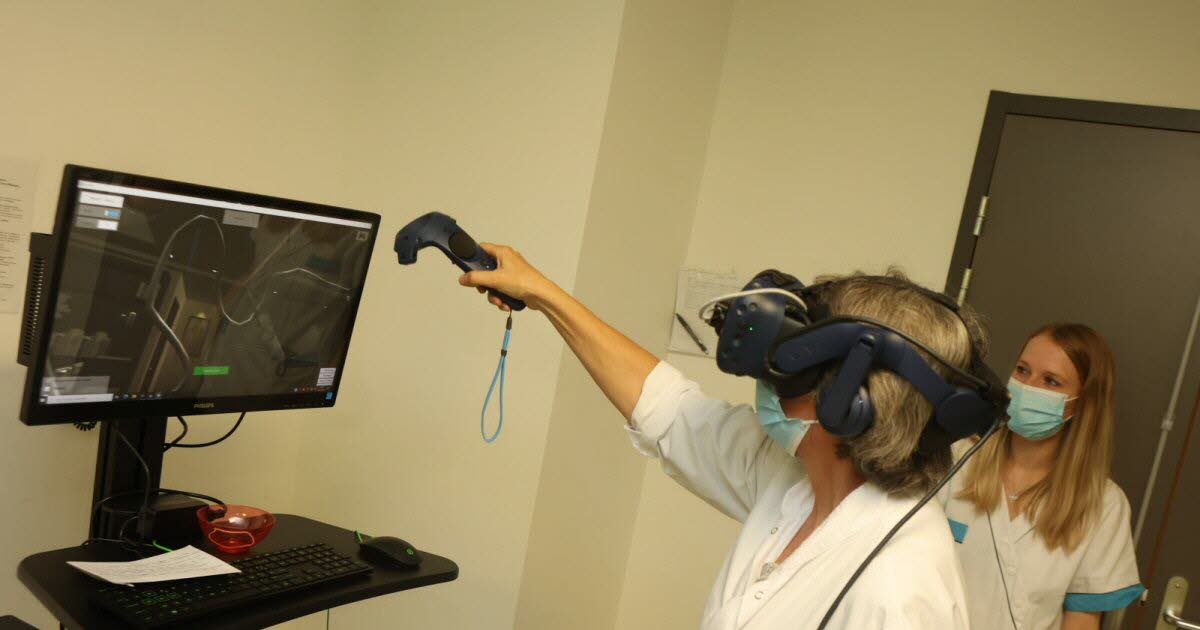A room at the Freyming-Merlebach Hospital, a reference center for follow-up care and rehabilitation, is equipped to allow immersion in a virtual world. Inside, a computer, motion sensors on either side of the room, a joystick or trackers that can be attached to the wrists or ankles, and a basic virtual reality headset. It is not a relaxation area for employees, but rather equipment aimed at opening up new treatment methods.
Free yourself from limitations
Developed by healthcare professionals, Virtualis “provides an additional tool to support the rehabilitation of our patients,” explains Dr. Catherine Ashour, Medical Coordinator for Physical Medicine and Rehabilitation (MPR). Studies show the benefits of rehabilitative care with this system that offers tremendous potential in many areas. »The ds Ashour evokes the “complete immersion of the patient in an environment in which he can free himself from all environmental constraints” and sometimes financially. This allows, in a different and pleasant way, “to work for example on the range of movements, diseases of the musculoskeletal system, back pain”.
There are also diseases related to brain damage, such as hemispheric neglect. The patient forgets half of his body and also loses half of his visual field. This immersion in the virtual world allows him to “make up and learn little by little to get his body and space back together.” The doctor also mentions mirror therapy, which is used especially for amputees, who often continue to experience pain in the missing limb. The software can simulate this and stimulate the brain to relieve this pain.
Parallel world, real benefits
“It is a tool among others, which comes in addition to the classic universal care provided by practitioners, occupational therapists, physiotherapists and also teachers in adaptive physical activities,” Dr.s Ashour. The teams trained and slowly began to tame the machine. “This allows us to diversify patient care, and to work differently, with innovative tools,” says Noemi Muller, an occupational therapist. “The other advantage is the ability to adapt the exercises and their difficulties in real time, to each other’s problems and capabilities,” and make things develop smoothly. Thanks to immersion in a parallel world, but in the end, very real benefits.
More than 36,000 euros have been invested in this equipment that will soon include, in addition, “a balancing platform, also linked to this virtual reality system”, declared Estelle Desrumeaux, Assistant Director of the Hospital. A technique that will undoubtedly be deployed within the hospital.

“Certified gamer. Problem solver. Internet enthusiast. Twitter scholar. Infuriatingly humble alcohol geek. Tv guru.”





